How to Propagate Fiddle Leaf Fig Clippings
Wondering about fiddle leaf fig propagation? Learn how to propagate fiddle leaf fig trees from clippings with these easy, step-by-step instructions!
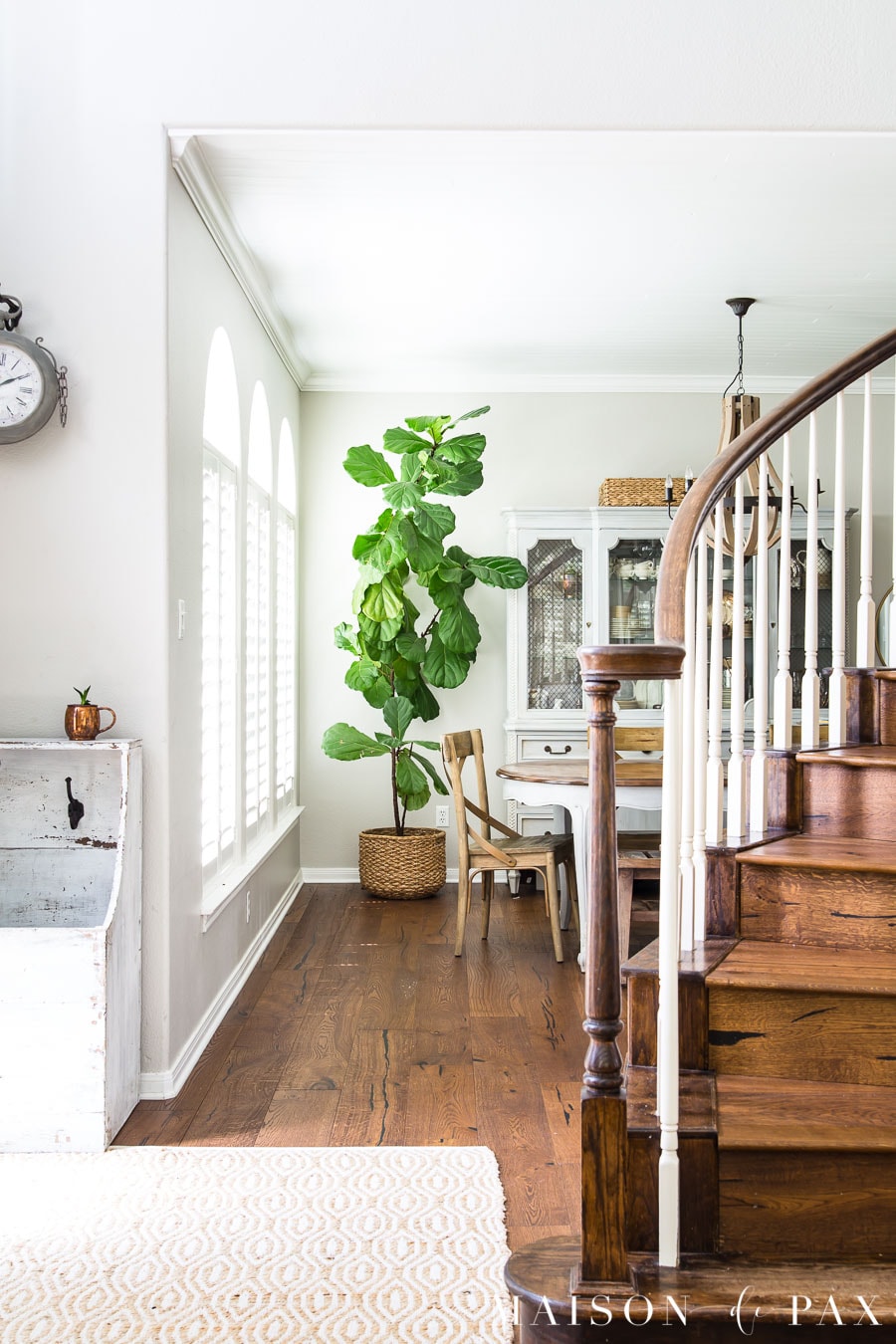
I have been the proud mother of fiddle leaf fig trees for about 8 years now. My first fiddle leaf figs were two sad little 3′ trees that I found on clearance at a local gardening center nursery for $8.50 each. I’m very pleased to say that they’ve come a looonnnng way since then!

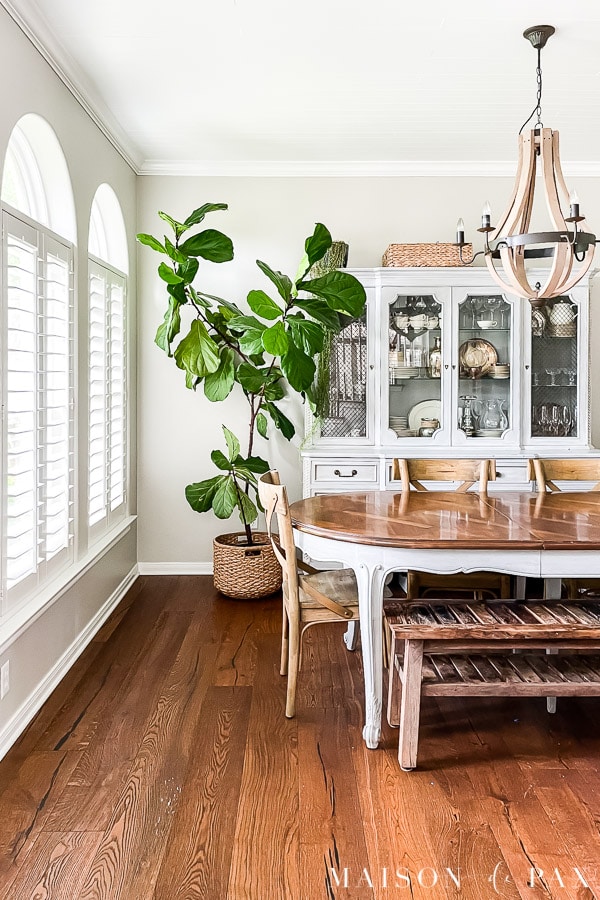
And I have also now successfully propagated two more little trees from the parents (who I have affectionately named Fred and Wilma, for the record).

And Fred and Wilma are still doing well, I’m so pleased to report. 😉
Fiddle leaf figs are some of my most favorite indoor plants, so I’m excited today to share with you step-by-step instructions for propagating fiddle leaf fig trees from clippings. It’s so easy! Before I do, let me answer a few FAQ’s about fiddle leaf fig propagation.
Fiddle Leaf Fig Plant Propagation FAQs
Can you propagate fiddle leaf fig plants?
Yes! Fiddle leaf figs trees, or ficus lyrata, do not propagate as easily as some plants, like succulents (get all the details on propagating succulents here), but with the proper technique, you can make new little plants from a healthy, live plant.
Unlike succulents, though, you cannot propagate a fiddle leaf plant just from a single leaf cutting. While you may be able to get a leaf to grow roots, it will not grow any branches without a stem clipping, so be sure that you have a large enough parent plant to get a clipping with stem and leaves (read on for exactly where to cut your clipping).
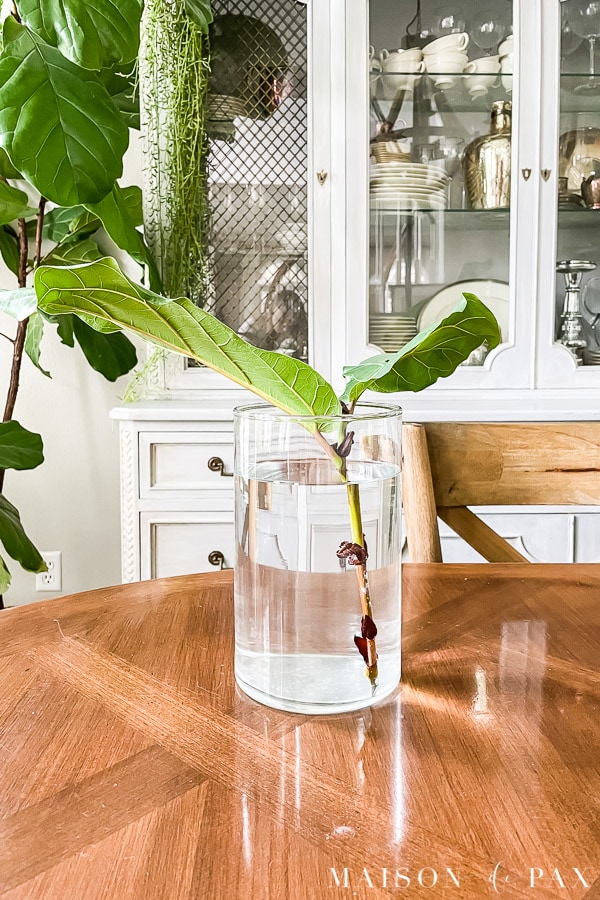
When should I try to propagate a fiddle leaf fig tree?
It is best to propagate fiddle leaf figs during their growing season, which is generally spring. Theoretically, fiddle leaf fig plants can go dormant in the time of year when it is cold or they do not receive enough light. Down here in Texas, though, in a house with lots of natural light, my fig trees continue growing year round and have been propagated in November… so remember that it depends somewhat on your location.
Where is the best place to cut the stem?
You want to cut your stem below a healthy leaf and between nodes. Nodes are the bumps on the fiddle leaf fig stem where the little brown leaves attach and where leaves grow.
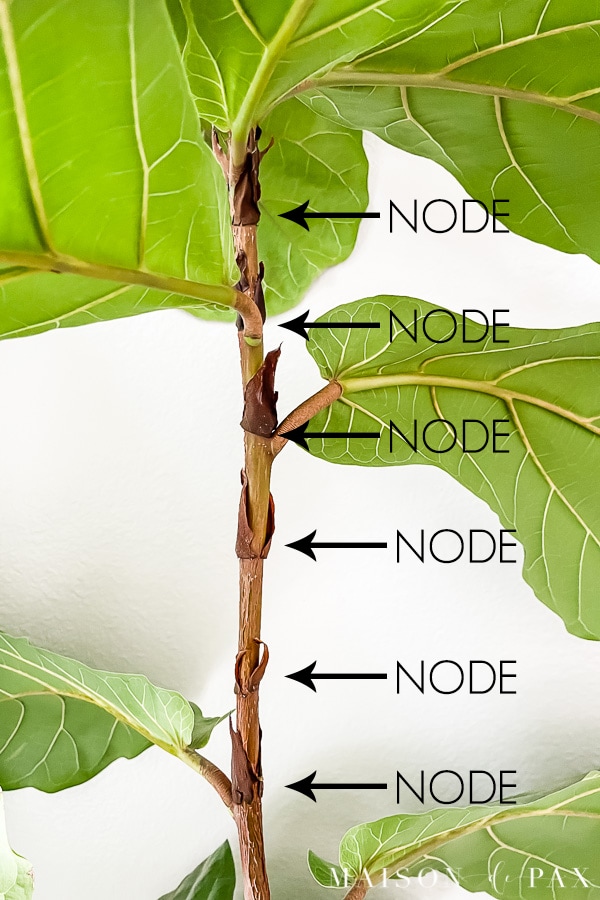
Ideally, you want to include at least 3 nodes and 2-4 leaves in your clipping. Remember that you will also need enough exposed stem beneath the leaves to submerge in water for the roots to grow a new root system.
How should you trim a ficus lyrata for propagation?
I prefer a clean, angled cut. Cutting on an angle exposes more surface area for root formation.
What is the best way to root fiddle leaf fig cuttings?
There are two methods for root development: root in water or soil. I have had success with rooting in water and placing in bright indirect light, so that is what this tutorial covers.
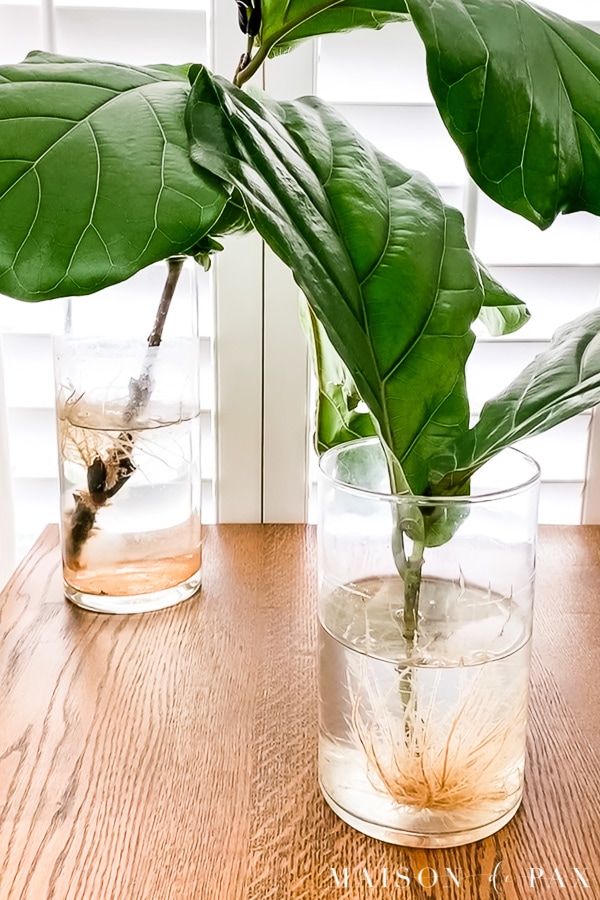
I like that water propagation allows you to see the growing roots to measure your success. Also, I have found that rooting in water does not require a clear plastic bag (which is sometimes used to hold in the moisture when rooting in soil).
When should you transfer your new plant into a plant pot?
You will need to let root growth form on your clipping for 6-8 weeks before transferring to soil. I have even left clippings in water for up to 4 months with success. The more established the roots, the better chance the plant will survive the transfer to soil.
This post contains affiliate links. Click here to read my full disclosure.
How to propagate fiddle leaf fig plants
Materials needed:
- healthy fiddle leaf fig plant
- sanitized shears or clippers
- rooting hormone
- clear vase with clean, room temperature water
See how easy it is with this video tutorial, or read on for the simple step-by-step instructions.
How to propagate a fiddle leaf fig tree from stem cuttings…
- Clip your branch
Choose a branch that will allow you to have several inches to place in the water PLUS 2-4 leaves. You want to clip a medium branch just below a healthy leaf, between the “nodes” (aka little bumps) on the stem.
Using sanitized scissors or clippers for pruning (just run them through a dishwasher or dip them in boiling water to avoid infections), try to make a single, clean cut (don’t saw). - Prepare the clipping
Trim off the lowest leaves so that you have several inches of empty stem to be able to place in the water.
Next, put a little rooting hormone in a small dish so you can dip the end of the new clipping into the rooting hormone. Cover the open end of the stem in the rooting powder. - Let the roots grow
Fill your vase with enough clean, room temperature tap water to cover the stem below the leaves. Place the container in a spot that receives lots of bright indirect sunlight throughout the day.
You should begin to see little white fuzzy hairs emerging from the stem within a few weeks. These are the roots! Once there are several inches of roots, you are ready to plant. - Plant your new tree
Fill a pot that has a drainage hole with high-quality potting soil. Make sure the well-draining soil is nice and moist. Plant the clipping upright so that your new roots are fully submerged beneath the soil. Water regularly (keeping the soil moist but not wet) as the roots are established. Place in a bright place without too much direct sunlight.
After a month or so, you can decrease watering to once per week. You still never want the soil to dry out completely, but keeping it moist at all times is not as important after the plant is well established.
Once planted in soil, you should see new growth of buds and new leaves within a few weeks! I always water my fiddle leaf fig trees once a week and feed them with this fiddle leaf fig plant food for nutrients about once a month.
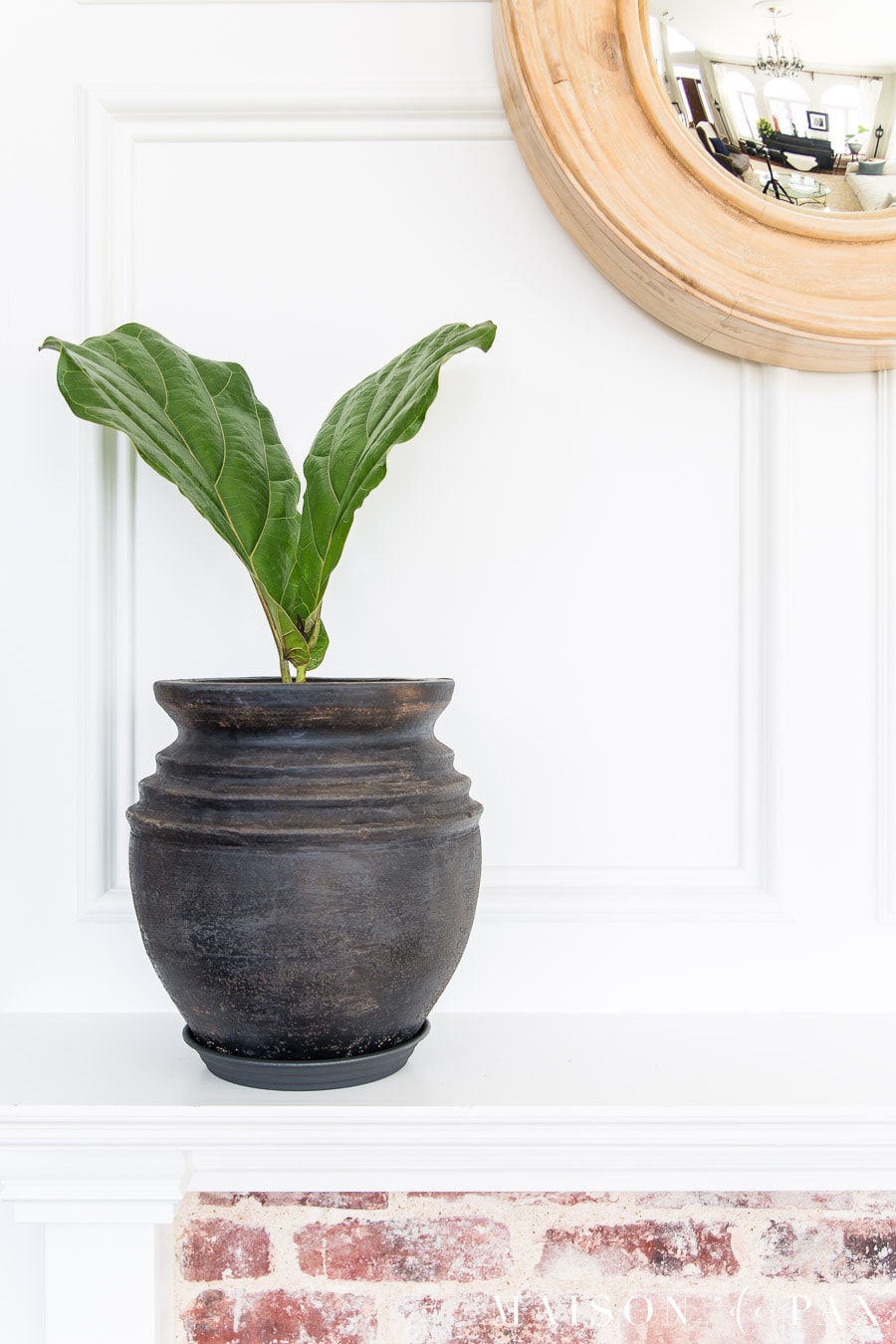
I hope you found this tutorial helpful! If you did, you might like to see some of my other posts on houseplants and their care:
And be sure to pin it for later!
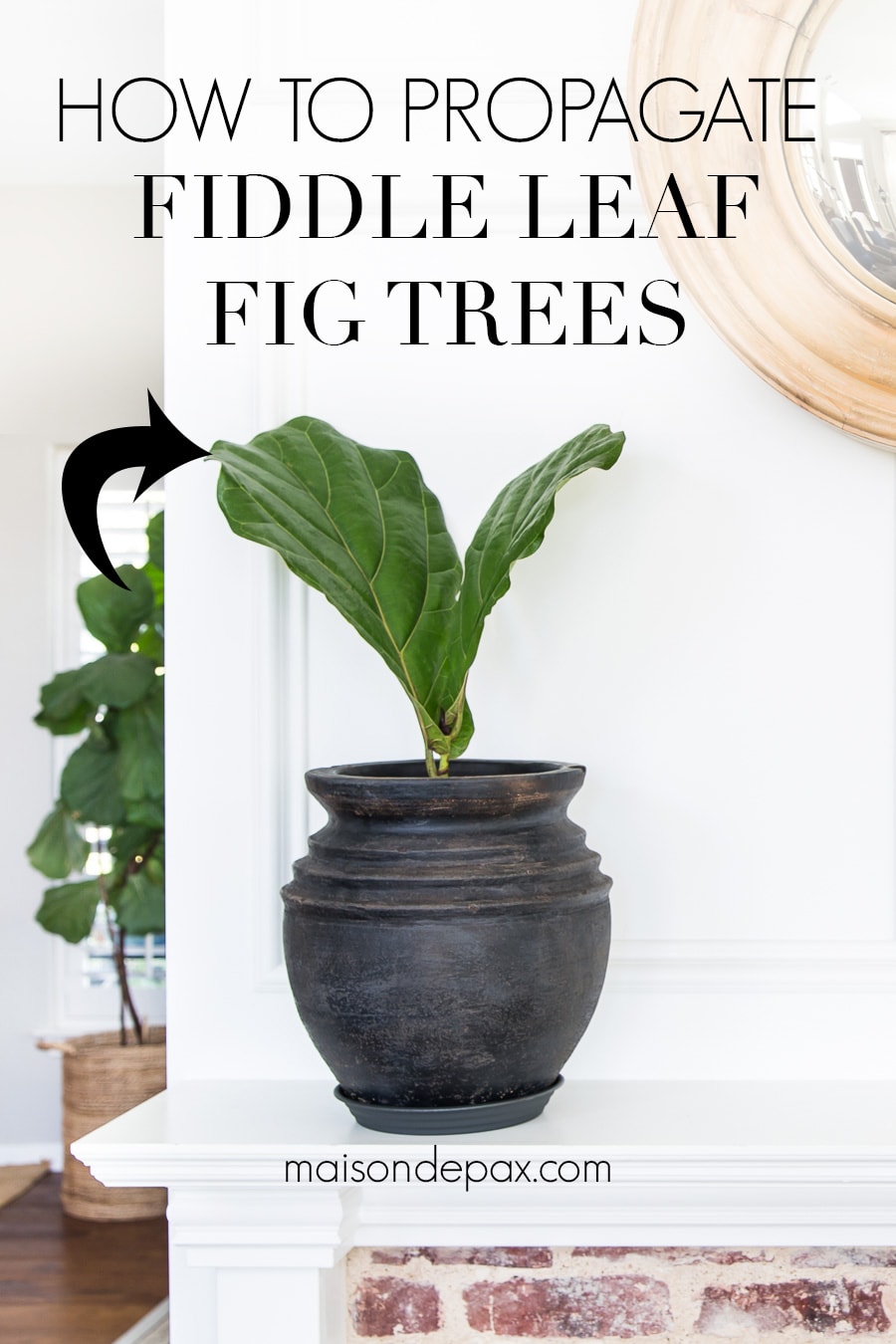

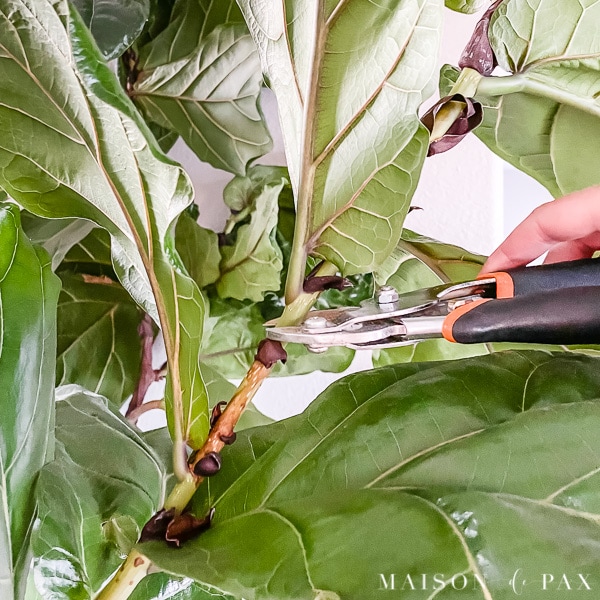
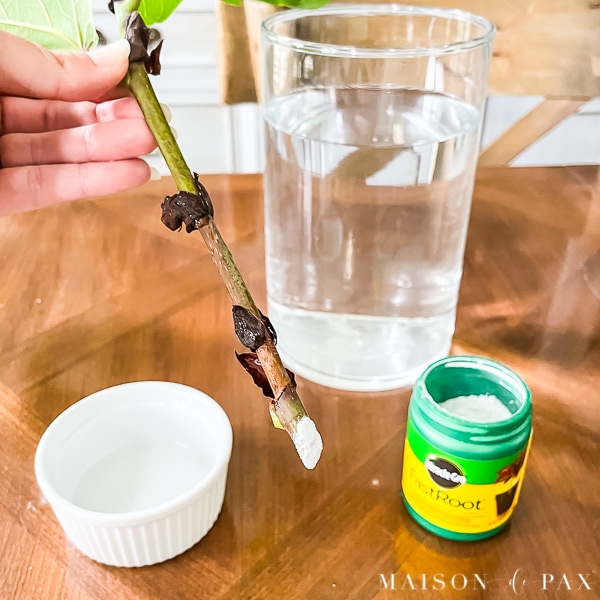
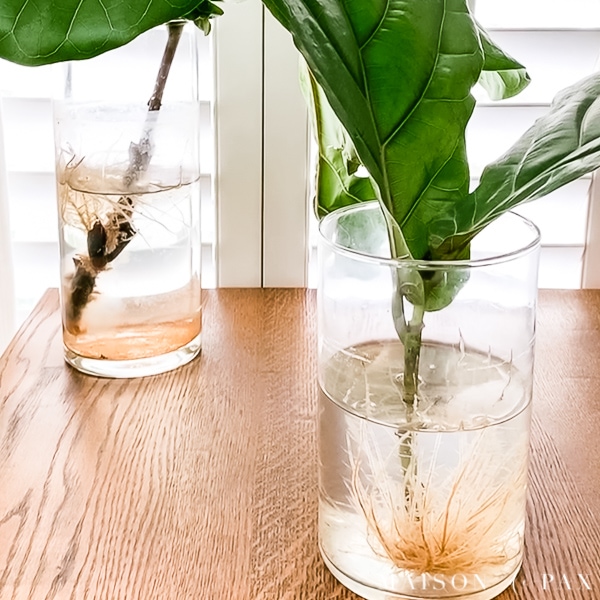
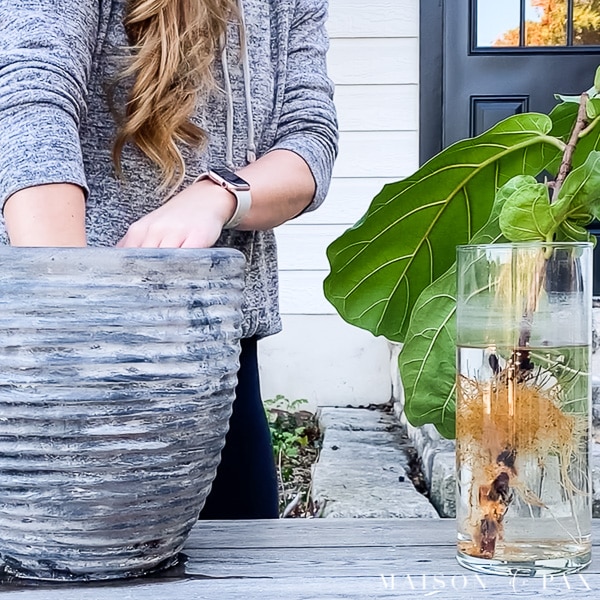
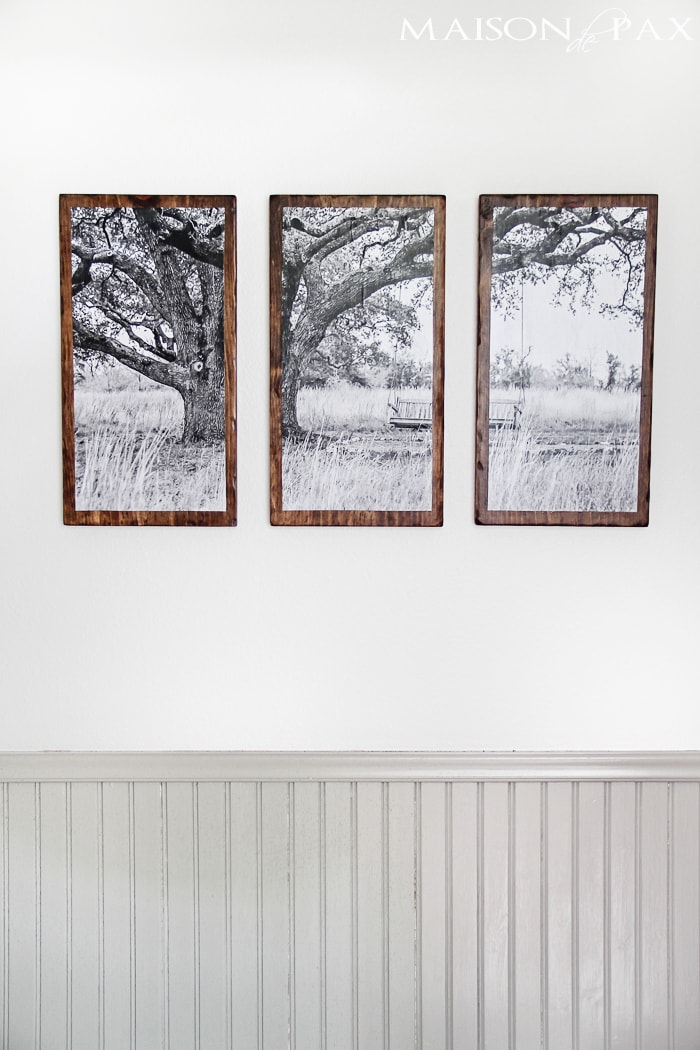

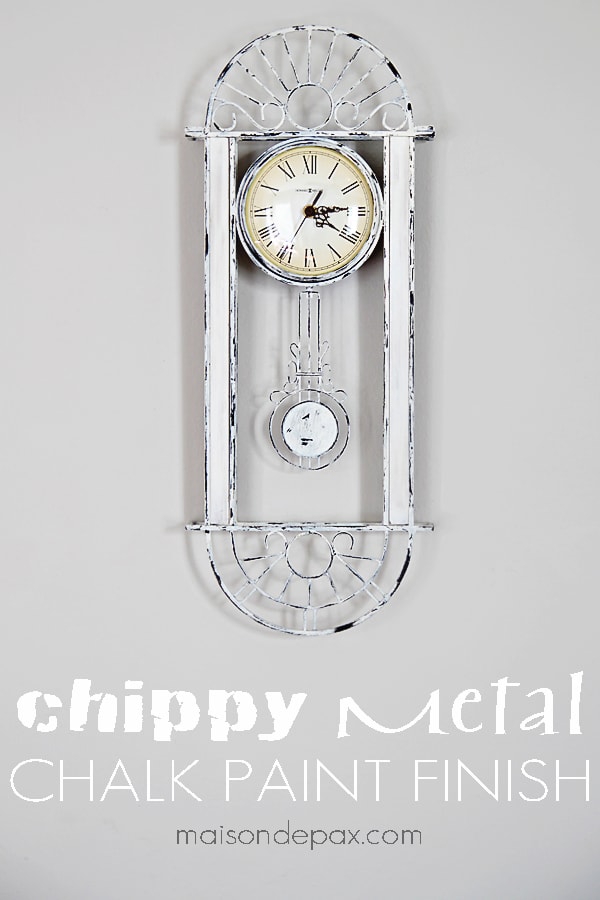
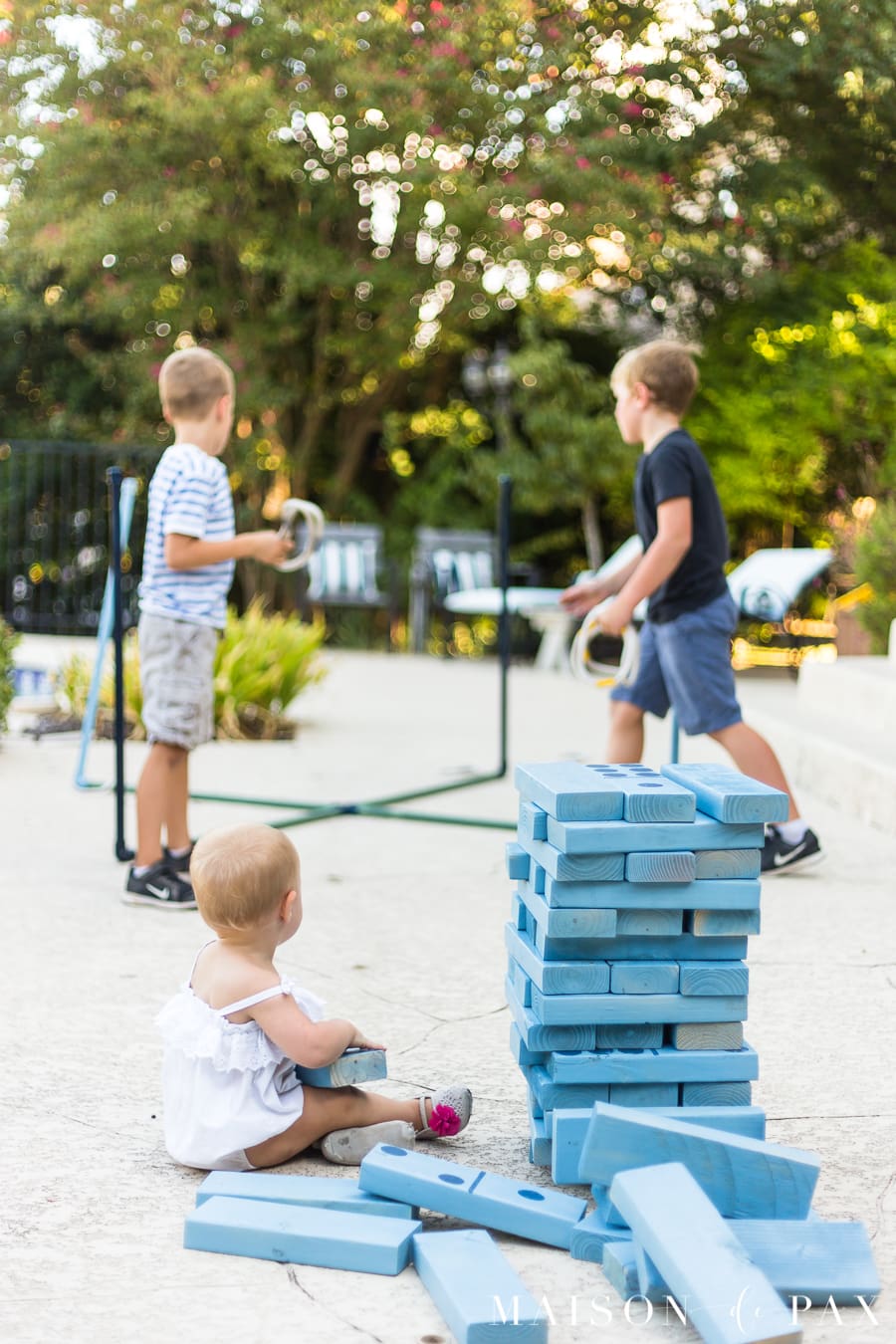
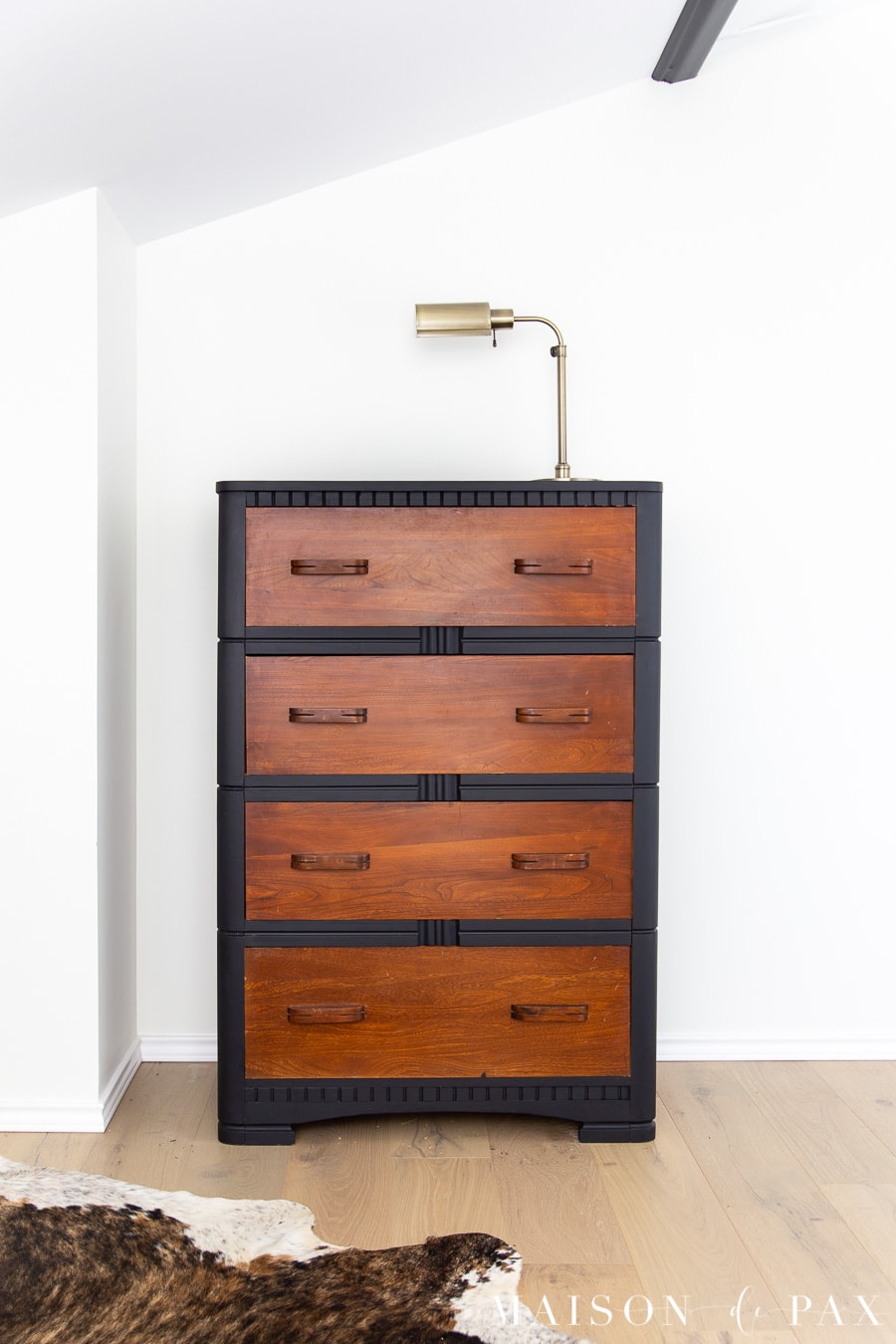

This post was amazing and enlightening. I did not have a clue that you can grow a fig tree by probably cutting a lame. Now I need to find a friend or family member that has one and get it growing. Thank you, thank you for sharing this fabulous information
So glad it was helpful, Ivory!
Hello! I have a rather tall FLF that is starting to lean. The top leaves look great but the lowers are starting to worry me. I’ve wondered if it is searching for light, and if I should trim the top and propogate it? Also on your tall trees how do you prevent the leaning? Thanks!
Hi Audrey! The leaning is definitely a result of the tree reaching for height. I had to trim mine because they were getting so tall, so you could propagate the top. The bottom leaves are the oldest and if they look rough, I tend to gently remove them. As we get into a cooler season, the FLF growth slows down. I’d consider waiting until the spring to propagate.
What paint color is on the walls in this room please?!
Hi Lauren! They are Agreeable Gray by Sherwin Williams. 🙂 Hope that helps!
Hello! Thank you for the great tips! I have a FLF stem growing as we speak- fingers crossed! Wondering where you got your beautiful black planters?
Hi Mariam! The pots were actually a fun DIY treatment. You can get all the details here: https://www.maisondepax.com/diy-aged-black-pottery/
Thanks you so much I have learned a lot .My plant has gotten so tall should I cut the top off will it damage the plant or stunt it growth if you can let me know
Hi Shirley! You can cut the top off, but you do need to make sure that you cut enough with a few nodes. You can plant that top portion as well to make a new fiddle leaf fig.
My plants are damaged should I cut the top off and propagate? One got chopped by my fan lol the other was sunburned while moving.
They can recover! Remove the sunburned leaf and then just treat as normal.